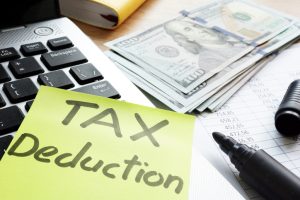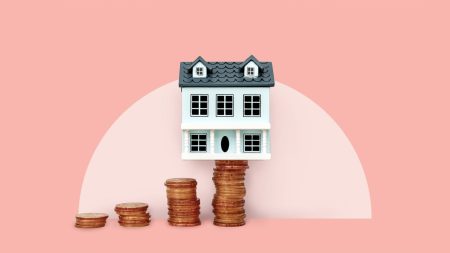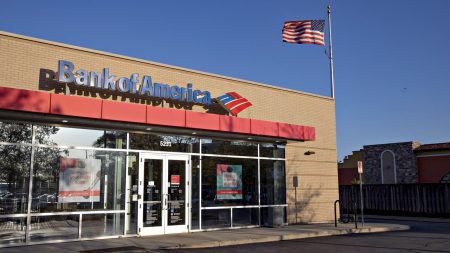The Federal Reserve voted on Wednesday to leave interest rates steady, but officials expect that both inflation and unemployment will rise in the year ahead, paving the way for two rate cuts by the end of the year.
The Fed’s announcement means the Fed’s key benchmark rate will, for now, stay in a target range of 4.25-4.5 percent, the highest since 2007. Those moves will keep the financing rates that you pay as a consumer elevated, too, on products from credit cards and auto loans to home equity lines of credit (HELOCs) and adjustable-rate mortgages. A silver-lining, however, is they’ll also help savers earn a competitive, inflation-beating return.
The Fed has now gone six months without cutting interest rates, even as experts say one might look warranted on paper. Inflation rose just 2.1 percent in April, the closest it’s been to the Fed’s target since prices first surged in the aftermath of the pandemic, according to the Department of Commerce. Meanwhile, the nation’s unemployment rate is holding at 4.2 percent, near the Fed’s estimates of maximum employment.
Policymakers, however, aren’t sure if price pressures will keep trending in the right direction. After Trump lifted import taxes to the highest level since the Great Depression in April, businesses have been telling Fed officials that they’ll have no choice but to pass those higher prices onto consumers.
“Everyone I know is forecasting a meaningful increase on prices from tariffs because someone has to pay for the tariffs,” said Fed Chair Jeroe Powell during the Fed’s post-meeting press conference. “Ultimately the cost of the tariff has to be paid and some of it will fall on the end consumer.”
Making matters worse, consumers have started to expect that prices will only grow higher, surveys of inflation expectations show. It’s a movie the Fed has seen before, during the coronavirus pandemic — and it didn’t like the ending. Powell has said that it wants to be sure that tariffs don’t lead to a sustained inflation problem, the way supply shortages in 2020 created an inflation crisis in 2022.
Even so, those price increases from tariffs have surprisingly not shown up yet. Inflation rose less than economists’ forecasts in both April and May, separate data from the Bureau of Labor Statistics shows. At the same time, the U.S. economy has started to display early signs of distress, as consumer spending slows and hiring weakens.
“The labor market’s not crying out for a rate cut,” Powell said. “But we watch it very, very carefully.”
In updated projections released along with the Fed’s decision, policymakers now expect unemployment to rise to 4.5 percent from its current 4.2 percent level. Inflation, meanwhile, is projected to heat back up to a 3 percent annual pace. All the while, economic growth is expected to slide this year, growing just 1.4 percent — the weakest pace in years.
Taken together, those projections led the Fed to pencil in a median of two rate cuts this year.
The environment highlights another prominent risk for the U.S. central bank: Tariffs could also cause the economy to slow, at a time when high interest rates are also pressing down on the brakes of the financial system. Indeed, all economists in Bankrate’s latest Economic Indicator Poll projected weaker growth and higher inflation from tariffs.
Yet, a growing number of officials — seven in June, up from four in March — don’t think the Fed will be able to cut borrowing costs at all. Powell warned that the Fed’s projections could shift as incoming data about the economy changes, too.
“With uncertainty as elevated as it is, no one holds these rate paths with a lot of conviction,” he said.
The Fed’s rate pause is likely to upset Trump. The chief executive in recent weeks has called on the Fed to cut borrowing costs a full percentage point — moves the Fed has typically reserved for economic catastrophes like the pandemic or the Great Recession — and has repeatedly called Powell “stupid” and a “numbskull” for being “too late.” Hours before the Fed announced its rate decision for June, Trump said from the White House on Wednesday that the U.S. central bank was wrong to be concerned about tariffs leading to inflation and should consider cutting borrowing costs two full percentage points.
For consumers, the message remains clear: High interest rates aren’t going anywhere, and the U.S. economy looks like it could be on uncertain ground.
Judging by the Fed’s own individual projections, don’t expect interest rates to come down very quickly. This is music to the ears of savers, like retirees, that are earning good income on their hard-earned savings. But it underscores the urgency for borrowers to aggressively pay down high-cost credit card debt and offers little hope of a significant drop in interest rates any time soon.
— Greg McBride, CFA, Bankrate chief financial analyst
Wondering what the Fed’s June announcement means for you? Here’s how the Fed’s latest decision could impact every aspect of your financial life.
The Fed’s interest rate decision: What it means for you
Savers
Five years ago, savers likely never envisioned the possibility of earning a 4 percent return on their cash. The U.S. economy was still struggling to fully return to speed after the Great Recession. Federal Reserve officials struggled to raise their key borrowing benchmark above 2 percent, leading to persistently low savings yields.
That all changed when the U.S. economy roared back to life after the coronavirus pandemic. A red-hot job market and surging inflation gave the Fed room to hike their benchmark interest rate more than 5 percentage points — and savings yields took the elevator up, too.
If you’re keeping your money in a traditional brick-and-mortar bank, though, you haven’t been able to reap the benefits of the Fed’s high-rate era. The national average annual percentage yield (APY) on a savings account is currently a paltry 0.48 percent, translating to a measly $4.80 a year per every $1,000 that you keep in a bank. That compares with the top annual percentage yield on the market (APY) — 4.3 percent, according to data tracked by Bankrate — where savers can earn $43 a year with the same amount of cash.
High-yield savings accounts can help savers expedite the growth of their emergency fund, all while safeguarding their funds from inflation. Bankrate’s picks for the best banks on the market are also insured by the Federal Deposit Insurance Corp. (FDIC), meaning they’re a no-risk investment.
Meanwhile, retirees looking to add a safe hedge against inflation to their portfolio can also still take advantage of certificates of deposit (CD), which are likely to stay at a decade-plus high as the Fed extends its pause on interest rate cuts.
Borrowers
Borrowers looking for lower interest rates will have to keep waiting as the Fed decided to leave interest rates alone again. Interest rates on auto loans, home equity loans, home equity lines of credit (HELOCs), personal loans and more are not as high as they used to be after the Fed’s three rate cuts last year, but they’re still hovering at decade-plus highs, Bankrate data shows.
Compare offers from multiple lenders, shop around for the best rate and work on keeping your credit score up, so you can boost your chances at finding the most competitive rate on the market. Making on-time payments and utilizing no more than 30 percent of your available credit are typically the two categories with the greatest impact on your score.
Credit card rates are still stubbornly stuck above 20 percent, but they’re never going to be cheap. Even when the Fed’s rate was hovering at near-zero, the average annual percentage rate (APR) on a credit card was near 16 percent.
For Americans looking for a way to get rid of their credit card debt, Bankrate’s rankings of the best balance-transfer cards currently give Americans an introductory 0 percent annual percentage rate (APR) for up to 21 months. That means you’ll be able to make interest-free payments for close to two years — helping you speed up your debt repayment. You also might be able to free up some cash that you can use to recycle back into your emergency fund.
Homeowners and homebuyers
The Fed has little direct control over mortgage rates. Case in point: The average rate on a 30-year fixed-rate mortgage has actually increased since last fall, even though the Fed cut its full benchmark borrowing rate a full percentage point, according to interest rates tracked by Bankrate.
That’s because long-term interest rates tend to have a closer relationship with the bond market, and investors still seem to be showing some concern about inflation, ballooning government debt and tariffs. The 10-year Treasury yield — the main benchmark for mortgage rates — has risen almost a full percentage point since September.
It all means homeowners and prospective buyers should be careful what they wish for when they cross their fingers about lower mortgage rates. Typically, bond yields fall when the U.S. economy is expected to weaken — an environment when it might also be harder to buy a home. In weaker economies, Americans tend to see slower wage growth, less job security, fewer job prospects and higher unemployment.
Investors
After a bumpy start to 2025 thanks to tariffs, recession risks and high rates, the S&P 500 has erased all of its losses for the year — and now is coming close to achieving a new record high.
Financial markets are proving the importance of stomaching massive volatility. The key stock market index fell as much as 19 percent from its mid-February high after Trump announced his massive “Liberation Day” duties. Since most of those tariff hikes were delayed, however, the index has turned around and gained almost 21 percent.
Reality may soon catch up with investors. The 90-day pause on Trump’s “reciprocal” tariffs is set to expire on July 9, but Trump looks like he’s made progress on a trade deal with just two countries: the U.K. and China. Not to mention, economists warn that inflation from tariffs could still be coming, while high rates are continuing to slam the brakes on economic growth — clear downside risks that might start to startle investors if they begin to show up in the economic data.
A stock market sell off can certainly test your resolve, but financial experts say stocks remain the best way to outpace inflation over the long run. The best steps you can take to guard against volatility include diversification and a long-term mindset.
Why we ask for feedback
Your feedback helps us improve our content and services. It takes less than a minute to
complete.
Your responses are anonymous and will only be used for improving our website.
Help us improve our content
Read the full article here









